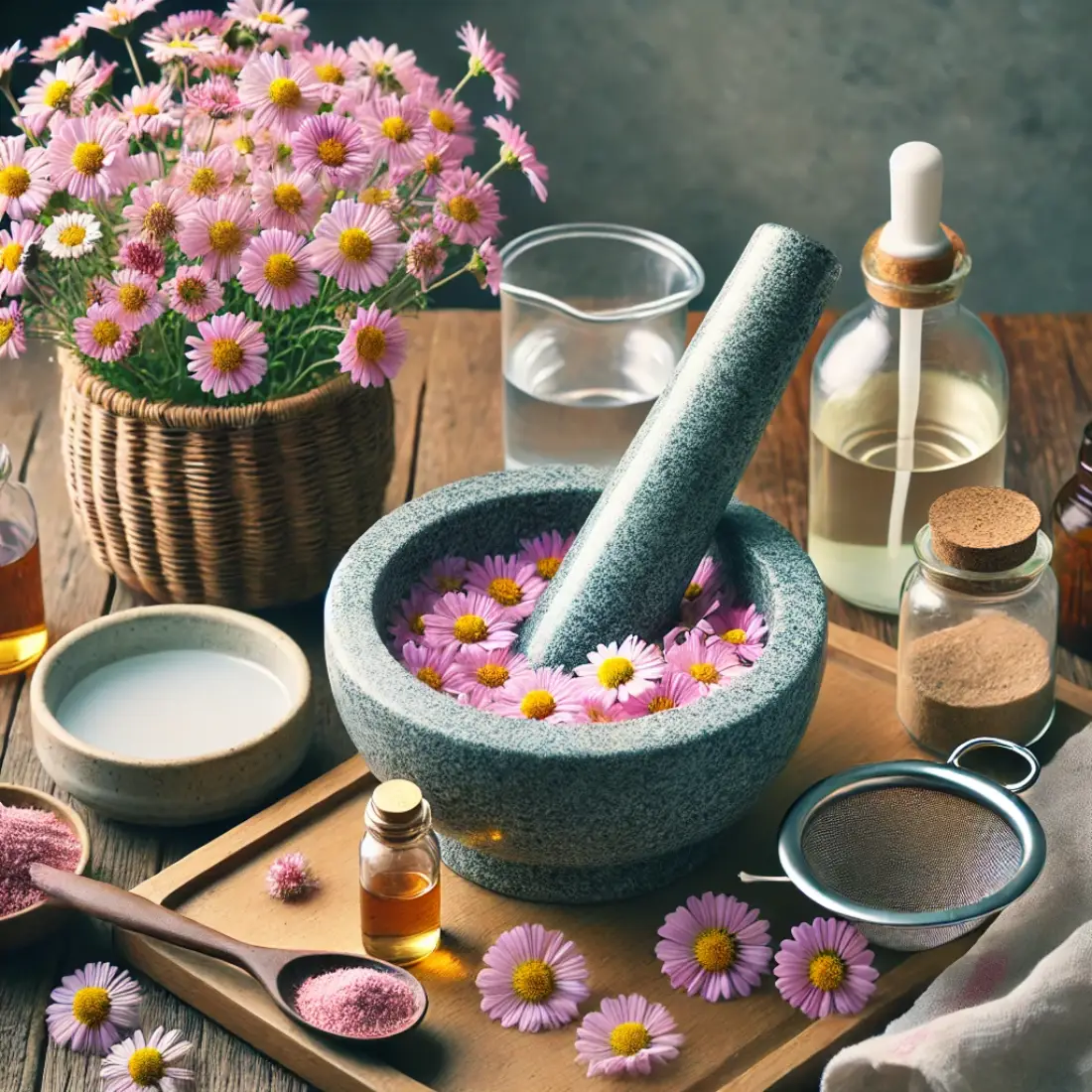Primula, commonly known as Primrose, is a beautiful perennial plant admired for its vibrant colors and early blooms. Native to cool and temperate regions, Primulas thrive in shady spots and add a burst of color to gardens and homes.
Growing Primula organically not only ensures healthier plants but also promotes environmental sustainability. By focusing on natural soil amendments, organic fertilizers, and eco-friendly pest control, you can enjoy thriving Primroses without harmful chemicals.
- Primula (commonly known as Primrose) is an easy-to-grow plant that thrives in cooler climates.
- Choosing the right organic soil mix and location is key to Primula success.
- Organic fertilizers and compost are essential for nutrient-rich soil.
- Watering and mulching help maintain moisture, while avoiding synthetic chemicals is crucial for healthy plants.
Choosing the Right Primula Variety
With over 400 species of Primula to choose from, selecting the right variety is essential for success in organic gardening. Some of the most popular choices include:
- Primula vulgaris: The classic English Primrose, known for its early spring blooms in shades of yellow, pink, and white.
- Primula veris: Commonly called Cowslip, this variety thrives in meadows and offers vibrant yellow flowers.
- Primula japonica: Ideal for shady gardens, this variety features striking tiered blooms in shades of red, pink, and white.
Optimal Growing Conditions for Primula (Primrose)
To grow Primula successfully at home using organic practices, it’s important to provide the right environment. Here are the key conditions:
- Light: Primulas prefer partial to full shade, making them ideal for areas with filtered sunlight or under trees.
- Soil: They thrive in moist, well-draining soil rich in organic matter. A slightly acidic to neutral pH (6.0-7.0) is optimal.
- Temperature: Cooler temperatures between 50-70°F are perfect for Primula, as they dislike extreme heat.
- Humidity: Moderate humidity helps them thrive. Mulching keeps the moisture levels balanced.
- Airflow: Ensure good air circulation to prevent fungal diseases.
Organic Practices for Planting and Caring for Primula (Primrose)
Growing Primula organically involves using natural methods for soil preparation, planting, and ongoing care. Here’s how you can ensure your Primulas thrive without synthetic chemicals:
Preparing the Soil Organically
Use a nutrient-rich soil mix made from compost, peat moss, and perlite. This ensures good drainage while retaining moisture. Add organic amendments like bone meal or leaf mold to boost fertility naturally.
Planting Techniques
- Timing: Plant Primulas in early spring or fall for best results.
- Spacing: Space plants 6-12 inches apart to allow air circulation, reducing the risk of disease.
Watering and Mulching
- Keep the soil consistently moist, but not waterlogged. Use collected rainwater if possible.
- Apply an organic mulch like shredded leaves or straw around the plants to retain moisture and suppress weeds.
Organic Fertilization: Feed your Primula with compost tea, worm castings, or fish emulsion every 4-6 weeks during the growing season. This provides essential nutrients naturally.
Natural Pest Control: To manage pests like aphids or slugs, use neem oil, diatomaceous earth, or encourage beneficial insects like ladybugs. Avoid chemical pesticides that can harm beneficial organisms.
Pruning and Deadheading Primula Organically
Proper pruning and deadheading are essential for encouraging continuous blooms and maintaining the health of your Primula plants. Here’s how to do it using organic methods:
- Deadheading: Regularly remove spent flowers by pinching them off or using clean pruning shears. This directs the plant’s energy toward producing more blooms rather than seed formation.
- Organic Pruning Tools: Always clean your pruning tools with natural disinfectants like vinegar or a mixture of water and lemon juice to prevent the spread of diseases.
- Timing: Prune any damaged or yellowing leaves throughout the growing season to keep the plant healthy and neat. Cut back the plant after flowering to encourage new growth.
Seasonal Care for Primula (Primrose)
Providing the right seasonal care ensures your Primula remains healthy year-round. Here’s how to care for them organically during different seasons:
1. Winter Care
- Mulching: Apply a thick layer of organic mulch like straw or compost to protect roots from freezing temperatures.
- Frost Protection: Use frost covers or garden fabric during extreme cold to shield plants, especially in harsh climates.
- Watering: Reduce watering in winter, but ensure soil doesn’t dry out completely. Water lightly during dry periods.
2. Spring Care
- Fertilization: Begin feeding with organic fertilizers like compost tea or worm castings to support new growth.
- Pruning: Remove any dead leaves and stems that didn’t survive the winter.
- Pest Management: Watch for pests emerging in spring. Use natural remedies like neem oil for prevention.
3. Summer Care
- Watering: Ensure consistent moisture as Primulas can struggle in hot weather. Water early in the morning to avoid water evaporation.
- Shade: Provide shade or move potted Primulas to cooler, shaded areas during hot summer days to prevent heat stress.
4. Fall Care
- Preparing for Dormancy: Stop fertilizing as the growing season ends and let the plants naturally go into dormancy.
- Dividing: Fall is the perfect time to divide Primula plants, using organic methods, to encourage fresh growth next season.
How to Propagate Primula Organically
Primula can be easily propagated through organic methods, ensuring healthy plants without synthetic chemicals. Here are two popular techniques:
1. Division Method
When to Divide: The best time to divide Primula is in the fall or early spring when the plant is dormant or just emerging.
Steps:
- Gently dig up the plant, being careful not to damage the roots.
- Split the root ball into smaller clumps using a sharp, clean knife or your hands.
- Replant each clump in well-prepared organic soil, spacing them 6-12 inches apart.
Aftercare: Water the divided plants well and mulch with organic matter like compost or leaf mold to retain moisture and protect the roots.
2. Seed Propagation
Using Organic Seeds: Collect seeds from mature Primulas or purchase certified organic seeds to ensure they’re free of synthetic treatments.
Steps:
- Sow seeds in a tray filled with an organic seed-starting mix (a blend of compost, peat moss, and perlite).
- Lightly cover the seeds with soil and keep them moist but not waterlogged.
- Place the tray in a cool, shady spot, as Primula seeds require cooler temperatures to germinate.
- Once the seedlings are strong enough, transplant them into the garden or pots with organic soil.
FAQs for Growing and Caring for Primula (Primrose) Organically
How often should I water Primula organically?
Water your Primula regularly to keep the soil moist, especially during hot weather. Use collected rainwater or distilled water for the best results, and avoid waterlogging the soil to prevent root rot.
What’s the best organic fertilizer for Primula?
Compost tea, worm castings, and fish emulsion are excellent organic fertilizers that provide essential nutrients to promote healthy growth without synthetic chemicals.
Can Primula grow in full sun?
Primulas prefer partial shade or dappled sunlight. Full sun, especially in hotter climates, can cause them to wilt or burn, so it’s best to provide shade during the hottest part of the day.
How do I protect Primula from pests organically?
Use natural pest control methods such as neem oil for aphids, diatomaceous earth for slugs, or encourage beneficial insects like ladybugs to control harmful pests.
How do I prevent fungal diseases in Primula organically?
Ensure good air circulation, avoid overwatering, and use organic solutions like a baking soda spray to prevent and treat fungal issues like powdery mildew.
When should I divide my Primula plants?
The best time to divide Primula is in early spring or fall, when the plant is dormant or just beginning to grow. Dividing helps prevent overcrowding and promotes healthier, stronger plants.
How long do Primulas bloom?
Primulas typically bloom for 6-8 weeks during the spring. Deadheading spent flowers can help extend the blooming period.
Can I grow Primula indoors organically?
Yes! Primulas can thrive indoors if provided with indirect sunlight, organic soil, and proper watering. Ensure they are in a cool location with good air circulation to avoid humidity-related issues.
Do I need to mulch Primula in organic gardening?
Yes, mulching with organic materials like shredded leaves or straw helps retain moisture, regulates soil temperature, and suppresses weeds, creating ideal conditions for your Primula.
What soil pH is best for growing Primula?
Primulas thrive in slightly acidic to neutral soil with a pH of 6.0-7.0. Test your soil and amend it organically using materials like compost to achieve the ideal pH balance.










